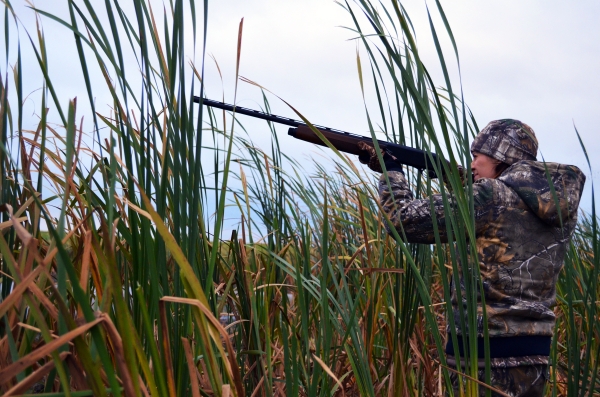
More than 80 percent of the wetlands in the Klamath Basin have been lost, making refuges like Upper Klamath National Wildlife Refuge vital for migrating waterfowl. A large percentage of the ducks in the Pacific Flyway use this refuge during the annual migration. The refuge provides an opportunity for hunters to get away from other hunters and hunt a deep marsh. Small marsh potholes and the marsh edge along the lake can provide good hunting for both dabbling and diving ducks. Early in the season, hunting for Canada and white-fronted goose also can be good. Access is via boats, and decoys and retrievers are highly recommended for hunting success. The Hanks Marsh Unit on the east side of the lake, while small, can provide good goose and duck hunting, particularly late in the season. The Barnes and Agency Units on the north end of the refuge also can provide good duck and goose hunting, though access is primarily from the lake side of the unit. Hunters should check on lake conditions early in the season because water levels can be so low as to make hunting access impossible.
Description of Upper Klamath Hunt Areas
Upper Klamath Refuge consists mostly open water marsh and is accessible only by boat with the exception of the Barnes & Agency Unit which can be accessed via the Wood River Wetland. The main hunting area is near Rocky Point on the west side of Upper Klamath Lake. The Hank's Marsh Unit on the southeast side of the lake is also open to hunting. These areas are not heavily hunted and low lake levels make access to the marsh difficult or impossible at times.
Directions
The main hunting area is accessed off of Hwy 140 from the Rocky Point exit and West Side Rd. The Rocky Point and Malone Springs boat launches provide access. The Hanks Marsh Unit is accessible from Hwy 97 north of Klamath Falls using the boat launch at Hagelstein County Park with a 5 mile boat ride south. Others put their boats in at Pelican Marina near Klamath Falls and boat approximately 6 miles north to Hanks Marsh.
NOTE: Upper Klamath Lake is used for irrigating the Klamath Basin and water levels may be very low by the fall hunt season. A surface elevation of 4140' is necessary to access the marshes. The USGS tracks lake levels on their website.
Small marsh pothole openings and hunting the marsh edge along the lake can provide good hunting for both dabbling and diving ducks. Canada and white-fronted goose hunting can also be good early in the season. Decoys and hunting dogs are highly recommended. Boats are the only way to access the area. This area provides a real opportunity to get away from other hunters and hunt the deep marsh. The primary species taken are mallard, gadwall, pintail, wigeon, green-winged teal, and lesser scaup.
Hanks Marsh Unit
The Hanks Marsh Unit on the east side of the lake, although small, can provide good goose and duck hunting particularly late in the season if lake levels drop and birds are attracted to the area as a result. Some excellent late season hunts are to be had when these conditions prevail.
Barnes and Agency Unit
A portion of the Barnes & Agency Units has been opened to hunting; please refer to the hunt map on this website for the specific hunt areas. This area consist of seasonally flooding marsh and water levels fluctuate greatly from year to year. Many deep canals run through the wetlands making traversing by foot difficult. Foot and bike access is available through the wood river wetland along Modoc Point Rd.
This area may change as restoration projects are completed, please refer to the hunt map each hunting season.
Special Equipment and Regulations
Boats with reliable motors should be used as distances to the hunting areas are considerable. Air-thrust and inboard water thrust (jet) boats are prohibited. Non-toxic shot required. All hunting blinds, decoys, boats, and other personal property must be removed at the end of each day. SeeWaterfowl General Regulations for License & Permits requirements.
